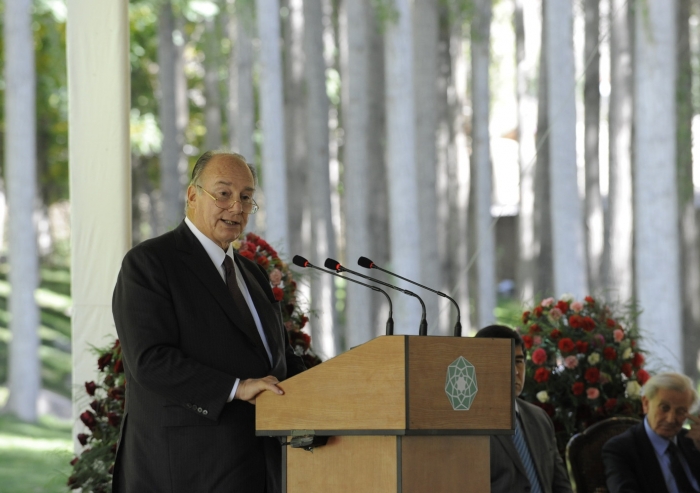Dushanbe Fresh Water Forum
Your Excellency President Rakhmonov
Your Excellency Prime Minster Akilov
Excellencies
Distinguished Participants
Ladies and Gentlemen
I am pleased to have this opportunity to speak at the beginning of this important conference: the Dushanbe Fresh Water Forum.
To you President Rakhmanov I offer my congratulations and thanks for your initiative to move the United Nations to declare 2003 as the International Year of Fresh Water. Your efforts have already resulted in important meetings around the world, the outcomes of which will be presented this afternoon. The Dushanbe Fresh Water Forum brings together specialists in the management and development of water resources from an international and regional perspective, in the special context of Central Asia.
I also commend your government for structuring this meeting to enable a broader segment of the people of Tajikistan to be exposed to these proceedings. Broad awareness and appreciation of the importance of the intelligent use of a progressively scarce resource is certainly part of the solution to the problems that the Forum will be wrestling with over the next three days.
From a global perspective, it is here, in Central Asia, that one of the most unusual water situations exists. I am referring to Lake Sarez. It is some 60 kilometres in length, containing some 17 cubic kilometres of water, is at 3200 meters altitude and has a natural dam of 550 meters, the highest of any dam in the world. For years it has been seen as a major hazard to millions of lives in this country and in Afghanistan, Uzbekistan, Turkmenistan and Kazakhstan. It is clear that if the rock dam, caused by an enormous landslide following an earthquake in 1911, were to break as a result of another such event; or if another earthquake were to cause landslides to fall into the lake, raising the level of the water and causing a massive spill across the top of the dam, the consequence would be a major catastrophe. It is estimated that 5 million lives could be at risk.
Fear of this happening has dominated the thinking of government officials and the population living in the area around and below Lake Sarez for years. More recently the World Bank, the Aga Khan Development Network (AKDN), USAID and the Swiss Government have expended time, thought and resources to develop a credible protective response that can alert downstream populations as quickly as possible. In simple terms, this is risk management. The question I wish to raise today is whether we are not perhaps also facing a question of opportunity management. Thousands of cubic meters of consumable water are trapped at high altitude. Is this not a situation which could be turned into a force for development, rather than a threat of tragedy? Studies are presently underway to test this idea, in particular in regard to the use of the Sarez Lake waters for hydro energy and irrigation for the area they now threaten, and probably much more. Any wisdom that this conference could bring to bear on these issues would be an extremely valuable outcome.
The other point I would like to stress is also about water management, but at more micro but still critically important human scale. I will do so because it is here, and in the nearby mountainous region of Northern Pakistan, that the AKDN has acquired much of its understanding of the importance of water management in physically difficult and fragile settings. This engagement now stretches over a period of more than twenty years in Pakistan, and ten years in Tajikistan. It has allowed the Network to develop its knowledge of the utilisation of this precious and scarce resource at the level of communities and watersheds.
This work has demonstrated that with support, mountain populations can enhance and maintain freshwater in a manner that contributes effectively to their increased well-being on an ongoing basis. At the same time, the use of water by these communities can be designed to be ecologically and socially responsible from the perspective of downstream communities, watersheds and even countries, that are equally dependent on adequate supplies of fresh water. I wish to make this point as I am struck how often, and in how many different discussions about water, people living in the communities scattered through the high mountains are seen as a problem.
I will not take your time to detail AKDN's experience with the development of irrigation, micro and mini hydroelectric plants, the planting of trees and hedgerows for fuel and land stabilisation and the like. Though essential, the technology is not the important message here. It is that with organisational support and technical inputs, mountain people can become part of the solution to effective watershed conservation and management, while also improving their own circumstances.
But, mountain communities need support from society and government at the national level. For much of Central Asia, but also in rural areas in Afghanistan and Northern Pakistan, civil society organisations based on principles of broad participation, equity and transparency are still uncommon. Their development needs support and requires legitimacy in the eyes of the government for they are the most capable micro managers of micro water resources. I know that in matters such as Lake Sarez, or the effective management by rural communities of their water resources, there are issues that require careful analysis. My purpose this morning has been to make two basic points. We must think creatively about the potential that Lake Sarez represents, while also attending to continuing issues of risk. It is equally essential to stress that the people living in mountain communities can be active participants in developments that will sustain and improve the supply of fresh water that is so vital to human life.
Thank you and best wishes for a productive set of deliberations over the next three days.







